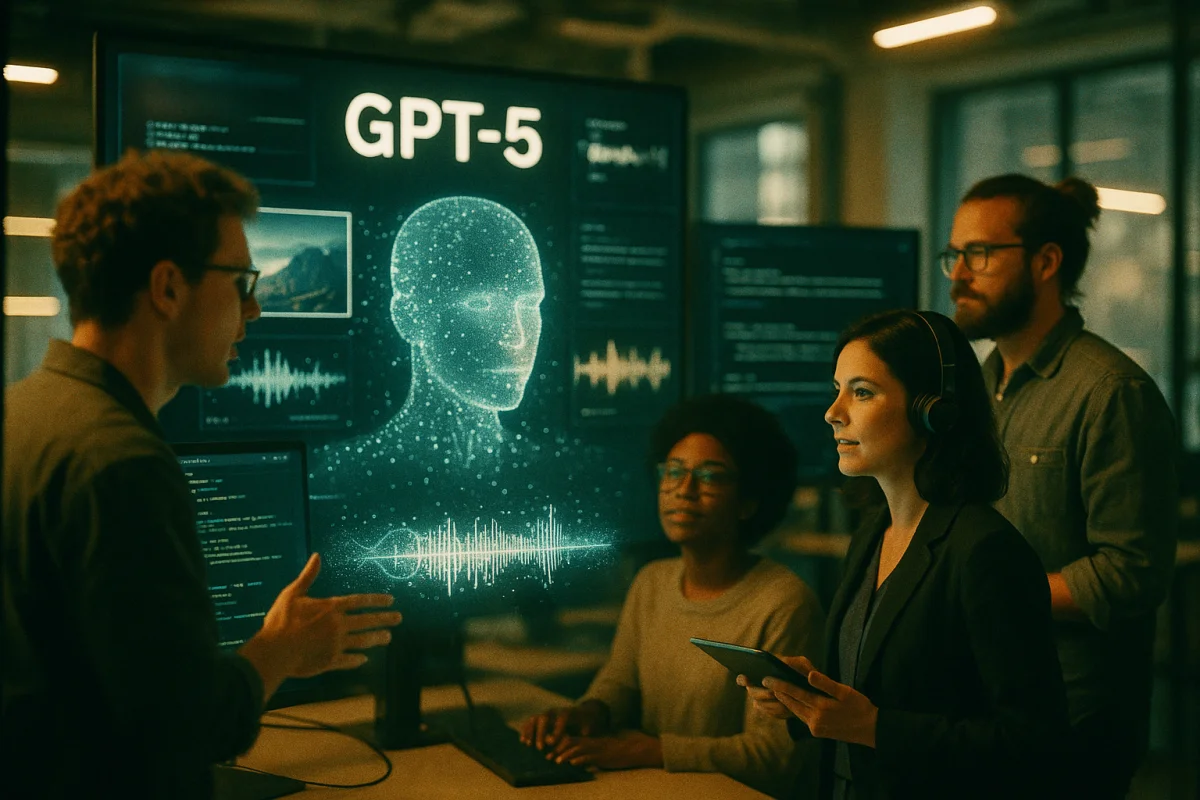OpenAI GPT‑5’s Hidden Abilities — What Will the Next Generation Bring?
What can a new AI do when GPT‑4 is already the “mega-standard”? The summer of 2025 is buzzing with intrigue — GPT‑5 has officially arrived as OpenAI’s new flagship, and it’s already exceeding expectations. Leaked technical slides reveal a significant multimodal leap, enhanced “reasoning” skills, and direct competition with Google Gemini Ultra. This is a new phenomenon: a seamless interface for human language, vision, audio, and action within one unified system.

Multimodal Functionality — Leaping Beyond the Past
GPT‑5 offers full-spectrum multimodality, processing text, images, audio, video, and code in real time (MIT Review, The Verge). Its new integrated “vision engine” can analyze details in images, interpret handwriting, review video snippets, and respond to voice commands in over 30 languages — all through a unified interface.
Gemini Ultra VS GPT‑5: The Race for AI Supremacy
Google’s DeepMind is rolling out Gemini Ultra, which merges text, voice, and visual control. Yet OpenAI’s demo showcased “continuous context” — a model that absorbs dialogue, information, and emotion simultaneously, then personalizes its output. Many experts note that GPT‑5 is outstandingly fast and accurate in answering queries, maintaining context, and delivering impressive test results (Wired, Ars Technica).
Leaks and Real-World Trends
New leaked slides suggest that GPT‑5 will enable “real-time data scraping,” visual code decoding, and the parallel manipulation of multiple live documents (CNBC, Reuters). AI integration is already being tested and implemented in Microsoft Copilot, Adobe Creative Suite, and Stripe’s newest APIs.
What Does It Mean for Users?
- Multimedia Chatbots: Users can search, create, and interact by voice, photo, or text — all simultaneously.
- Enhanced AI Collaboration: Experience seamless live dialogue, document editing, and data analysis within a single workflow.
- Improved Security and Trust: New mechanisms include watermarks, content validation, and digital trust signatures for AI-generated output.
Conclusion
GPT-5 is the first model to truly compete in a full multimedia world — mastering human language, visuals, and audio within one unified system. The future of AI starts here: a faster, more intuitive, and even more accurate generative intelligence.
📌 What do you think — should AI become the norm for daily life, or is it time to set limits on its power? Join the debate in the comments!
✍ Article Author
- Registered: 27 April 2025, 10:30
- Location: Georgia




 Tornike
Tornike